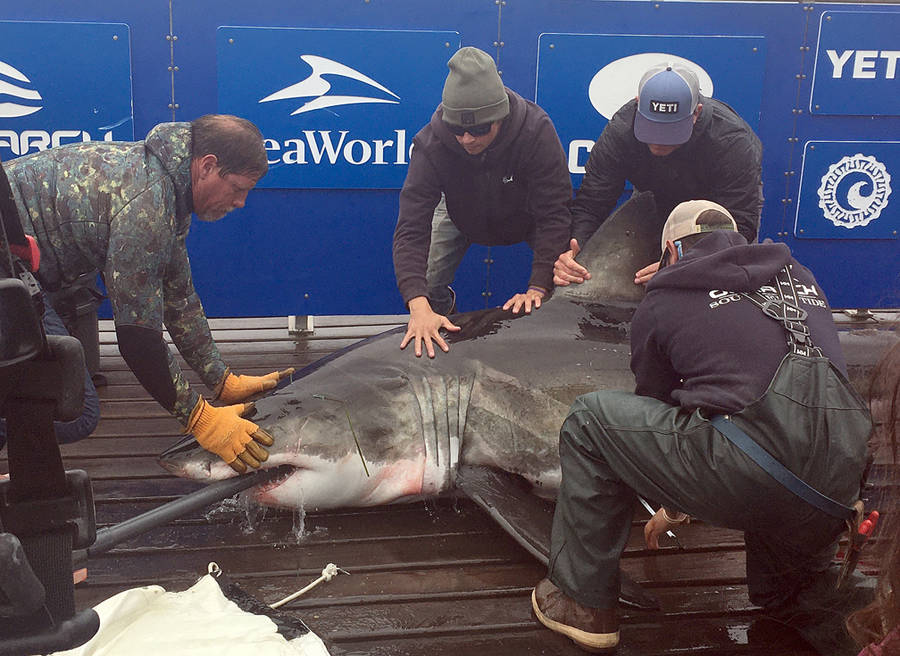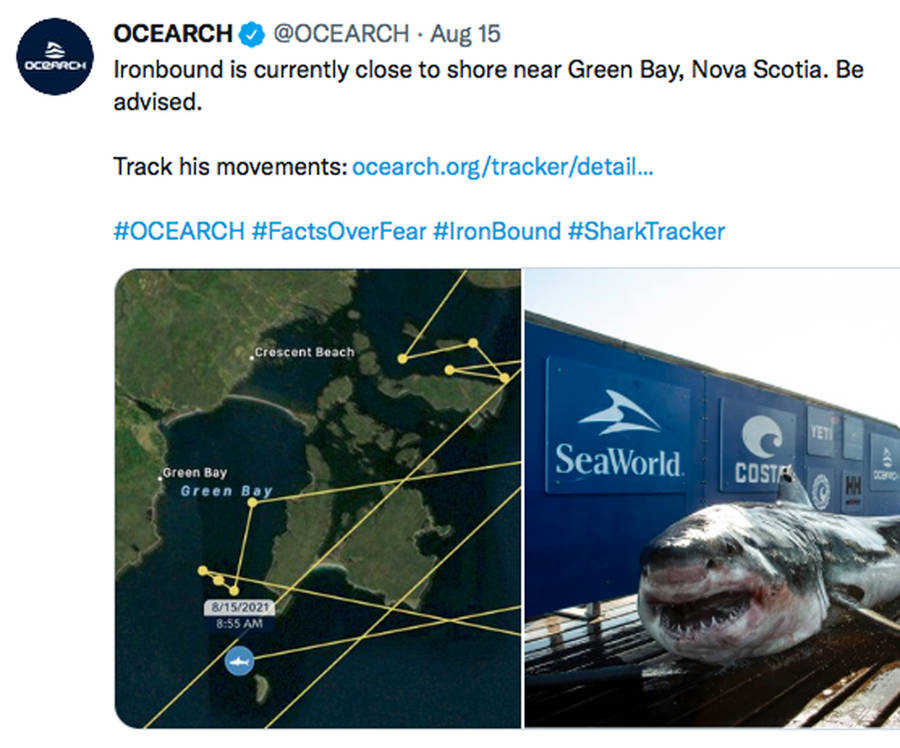
2021-08-25
Ocearch cautions about white shark tracking near Green Bay, plans fourth expedition to province
by KEITH CORCORANThe American-based white shark research group, Ocearch, which is known for its animal track-tagging abilities as part of the work with the apex predators, advised on Twitter one its animals was tracking close to the Lunenburg County shore.
The social media post appeared August 15, two days after a suspected shark attack in Cape Breton injured a female swimmer in her 20s.
Ocearch's chief science advisor, Bob Hueter, said the message was meant for education, not fear. White sharks have always meandered the Atlantic, it's just data-collection and tracking have brought more awareness. "It just shows the importance of the work we're doing to help people understand and to be smart," Hueter told LighthouseNOW.
He said marine studies are indicating white shark populations are on the rise on the east coast.
The August 15 post notification said Ironbound (Ocearch names and gives social media profiles to sharks it tags) "is currently close to shore near Green Bay, Nova Scotia." Ironbound is a 3.6-metre male, weighing 452 kilograms. He was tagged off Lunenburg County during Ocearch's Nova Scotia expedition in 2019.
Shark specifications and information about Ocearch-tagged animals are available on the group's web site at www.ocearch.org on the internet.
"When one of our sharks swims into an area that's very close to a beach, we evaluate the integrity of that location, look make sure it's a good ping and, if it is, we just try to put out an advisory," Hueter added. "It's not a warning, it's not to scare anybody, it's simply saying, 'keep an eye on this animal, you can track it ... keep an eye on it, especially local beach goers.'"
Ironbound's latest track put him southwest of Cape LaHave Island in Lunenburg County.
Hueter said Ocearch is coming back to the province's waters for another round of research, marking the group's fourth expedition here.
"We are returning next month to try get more tags out and do the rest of our work," he explained. "We look forward to our time again in Nova Scotia."
Ocearch is bringing its mobile research base, a re-configured 38-metre crab vessel, northbound for a trip running between September 7 and 30, likely starting off Guysborough County and venturing southwest to Lunenburg County.
Last year, Ocearch caught, collected samples and released the largest white shark of its 2020 Nova Scotia expedition near West Ironbound Island in Upper Kingsburg. The 1,600-kilogram, five-metre-plus-size female, coined Nukumi, was the biggest of any white shark caught during any of the expeditions to the province. She is estimated to be about 50 years old.
Ocearch tagged eight white sharks during the 2020 expedition, of which seven were discovered in Lunenburg County area waters. The organization enjoyed similar success in 2019. Ocearch tagged six during its first excursion to the province in 2018.






